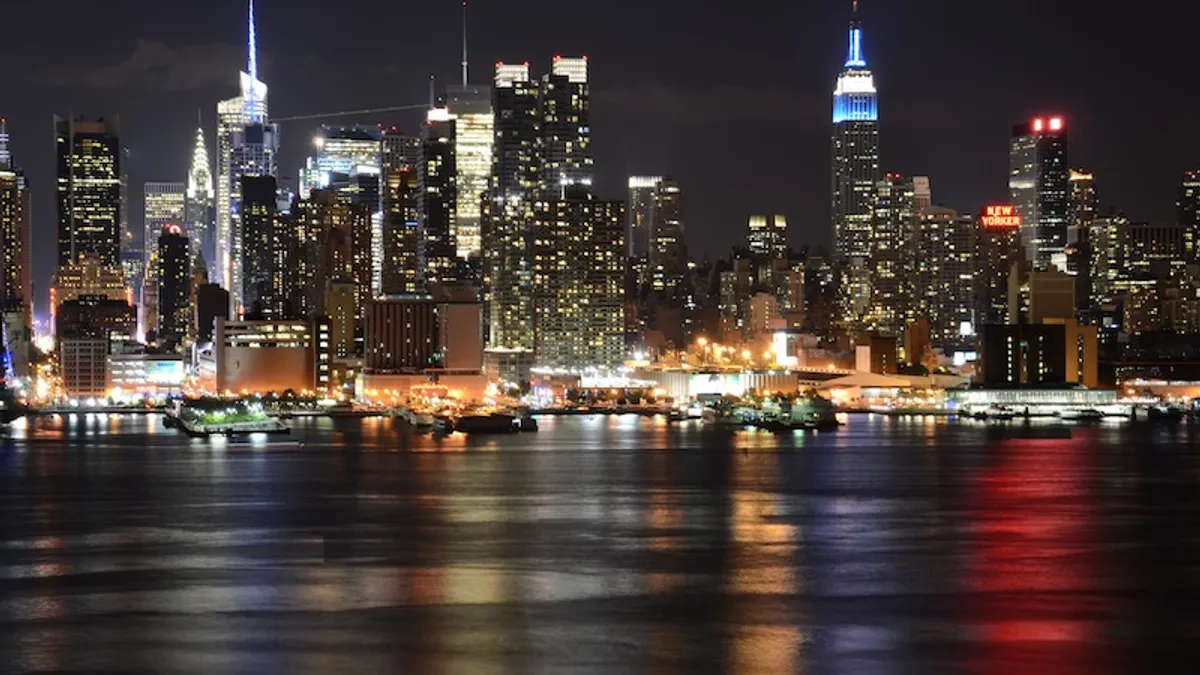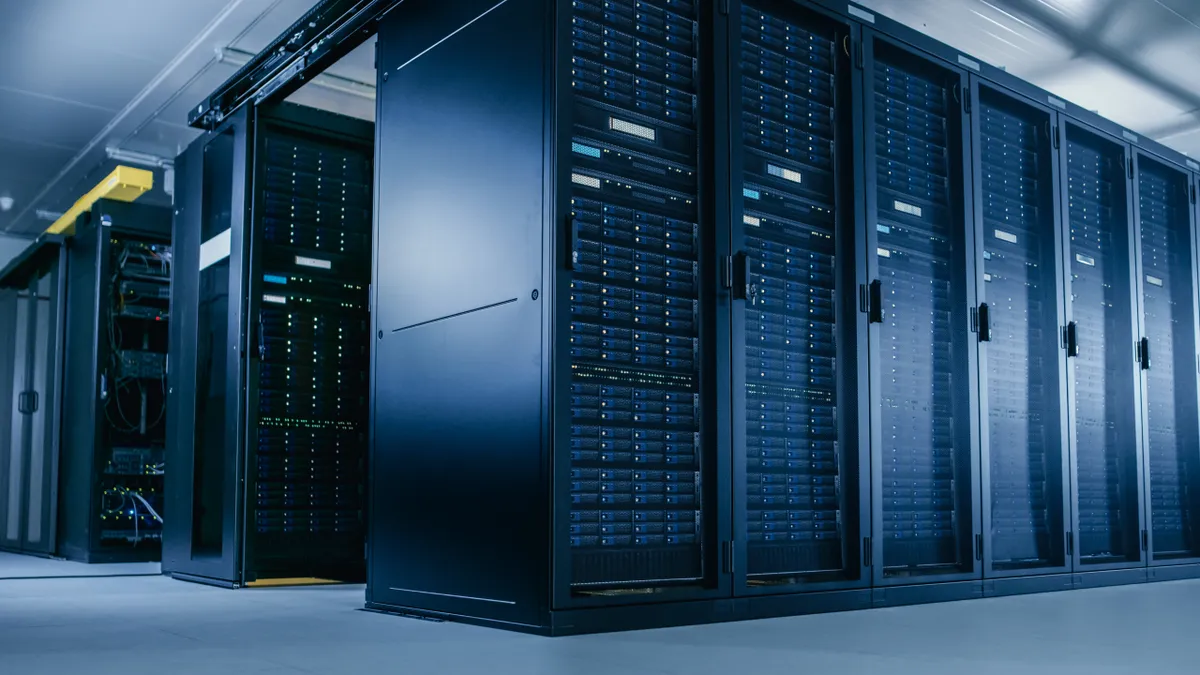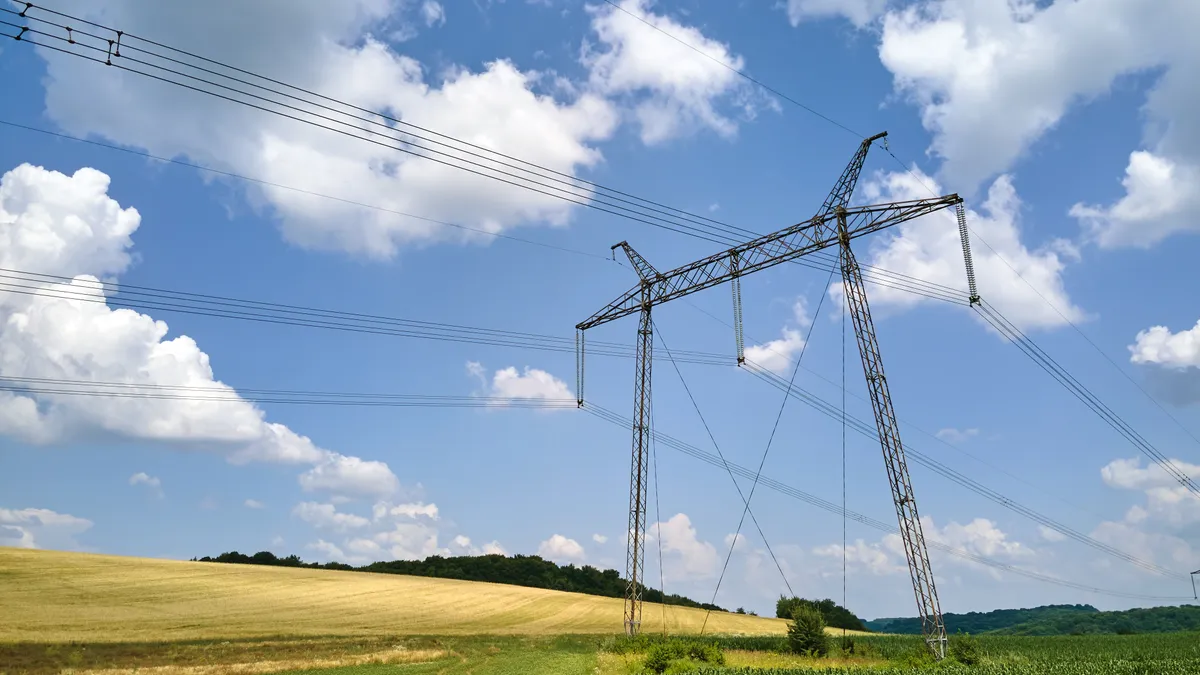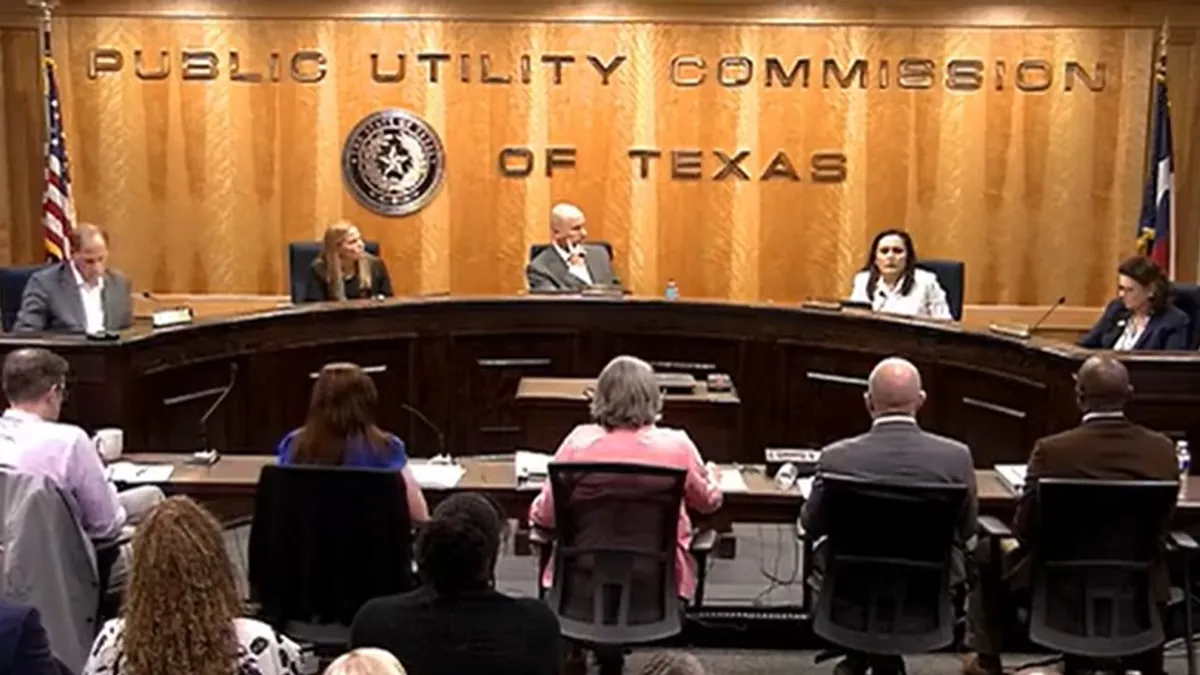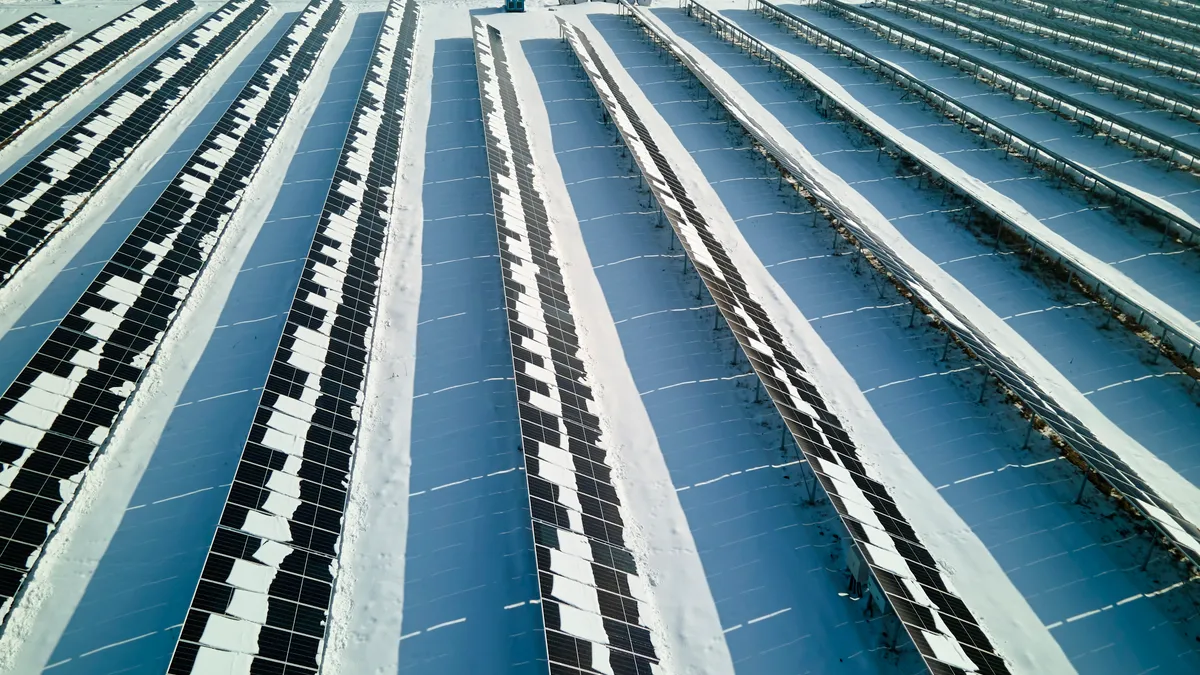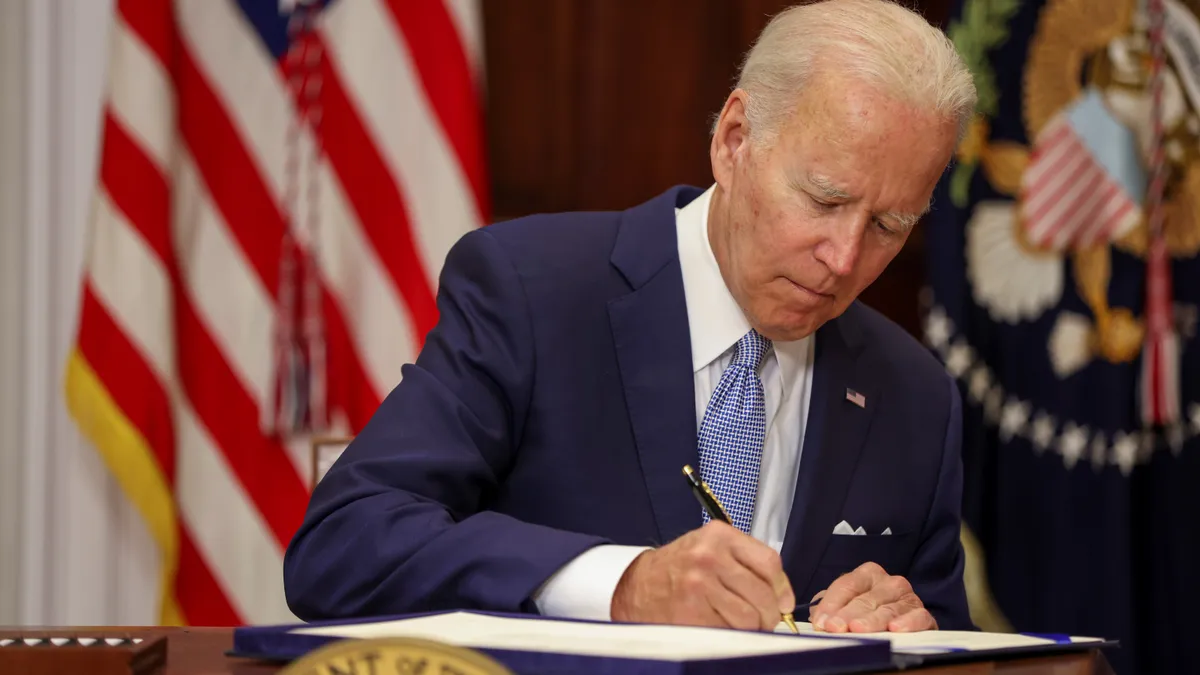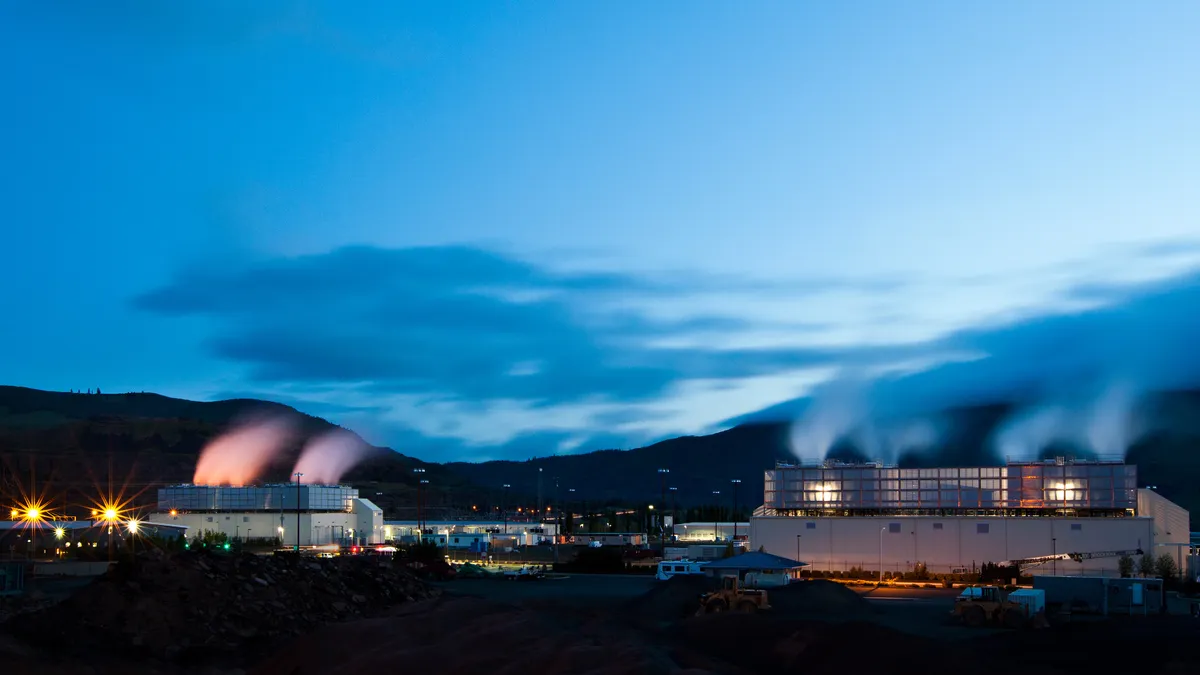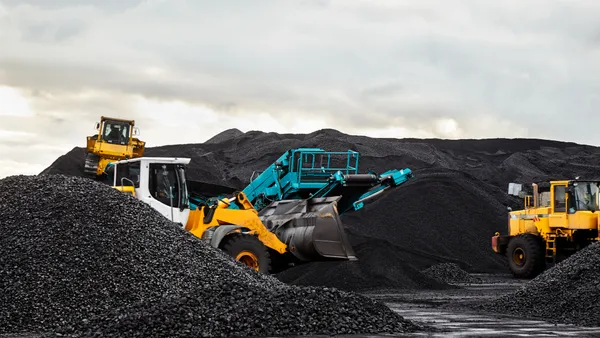Barely a week old, New York’s Clean Energy Standard is already stirring up the power sector.
On Aug 1., the state's Public Service Commission unanimously approved a 50%-by-2030 renewable energy mandate and income supports for three upstate nuclear plants.
While the PSC had solid support from state stakeholders for the hike in the renewable portfolio standard, the nuclear supports have proved more controversial. Anti-nuclear groups panned the plan as a bailout for aging, uneconomic generation and natural gas interests argued it stepped into the federal government’s jurisdiction over wholesale power markets.
While those debates are sure to stretch into the next year, legal analysts told Utility Dive it is likely some version of the CES will pass muster with the courts. Under the mandate, much of the responsibility for transitioning the state reliably to a lower carbon grid will fall to the New York Independent System Operator (NYISO), the nonprofit entity that oversees the bulk power system in the state.
NYISO CEO Brad Jones says they are prepared for the challenge. In an interview last month with Utility Dive, he expressed support for the Clean Energy Standard, which at that point was just a draft proposal.
“One of the elements of the CES is the potential to create lifelines or short-term products that will help nuclear units through this transition, so that's one of the ways to ensure we have the appropriate amount of baseload generation in the near future,” Jones said.
But keeping existing low-carbon generation on the grid is only one moving part in the effort to decarbonize New York’s power system, Jones said. Enhanced investments, particularly in transmission, and new grid practices, such as distributed resource coordination, will be needed to help the state meet its long-term goal of cutting greenhouse gases 80% by 2050.
Nukes and decarbonziation
When Utility Dive first spoke to Jones, the Clean Energy Standard was still a proposal estimated to funnel about $7 billion to the three nuclear plants over 12 years. In the final order, regulators altered the payment formula, decreasing it to $965 million over two years before it must be reevaluated.
Despite the changes, Jones told Utility Dive after the final order that he and the NYISO staff are satisfied.
“The NYISO supports the state’s 50 x 30 goal and the policy decision to value the carbon-free attributes of the state’s nuclear generation resources,” he wrote to Utility Dive. “Retaining the nuclear fleet is important not only to achieving the Clean Energy Standard, but also to maintaining fuel diversity. I am confident our markets are poised to provide an effective platform for meeting these objectives while maintaining system reliability, facilitating investment in essential infrastructure and efficiently balancing resources.”
The income supports for struggling nuclear units are necessary to achieve Gov. Cuomo’s goal of cutting greenhouse gas emissions 40% from 1990 levels by 2030, he said — a point echoed by the PSC in its order, which said replacing the three plants with efficiency and renewables would be unfeasible.
“We got about roughly 30% [of our power] from nuclear, 25% from hydro, and 5% from other renewables” in NYISO last year, Jones said. “As you can imagine it would be much more difficult to achieve our low carbon goals without the nuclear fleet we have.”
While Jones supports the CES as a transitional measure, the NYISO CEO reiterated a call from many grid operators and state regulators to transition to a more direct price on carbon in the near future.
“I continue to believe the failing of our markets at this point is that we don't appropriately value carbon, and we have to change that in the future,” Jones said. “We're very thankful that the commission has been looking at ways to create a bridge for nuclear into this future environment, but long-term we should appropriately value carbon in our markets.”
New York, along with a group of New England states, currently participates in the Regional Greenhouse Gas Initiative (RGGI), a cap-and-trade system meant to cut carbon through the trading of carbon emission allowances. Critics say the market sets the cap for emissions too high, resulting in a carbon price that's too low to drive investment decisions.
Overall, RGGI is “a great program,” Jones said. “Unfortunately, RGGI is not as ambitious as our governor's overall goals.”
The carbon market could work to deliver on Cuomo’s climate goals, Jones said, but that would mean convincing the other states to align their GHG reductions with New York.
“If that were possible to do in a quick way, I think it would be wonderful to pursue RGGI changes to make that a possibility,” Jones said. “In the meantime though, I think our governor wants to move quicker, and 2030 is just a short 14 years away, so we need to begin that process.”
Strengthening the ‘backbone’
While renewable energy has been growing in the New York ISO, it still represented less than a quarter of power generation in the state in 2015.
That mean utilities in the state have a lot more work to do in the next 14 years to integrate new renewables. To facilitate that transition, both Jones and NYISO's Power Trends report make clear that building out new transmission should be the top priority for the grid.
“Transmission is the backbone that supports innovation and our changes to the grid,” Jones said. “It's going to be very important to have the transmission capabilities to move power from our most distant areas to our load centers and move that green power along those pathways.”
Most of New York’s population is concentrated in the south around New York City, but most of the renewable energy comes from wind farms in the north, or is imported from out-of-state, such as hydro from Canada.
“Those resources are likely to be quite distant from our load centers,” Jones said. “We have to be make sure we have the pathways that enable us to move that green power down to our load centers in New York. That's the key about driving new transmission.”
The focus on building new power lines isn’t new for NYISO. The region has added 2,765 MW of transmission capacity since 2000, according to the Power Trends report
Jones said he expects all resources to play a role in transitioning toward the 50% clean energy standard, but wind and imported Canadian hydro will be especially important. He praised the recent “Tres Amigos” pact signed between the U.S., Canada and Mexico, which aims to increase international power trading and hit a 50% renewables and nuclear goal across North America by 2025.
“We see great opportunities to bring additional renewable green resources into New York State and the fact that the federal government is also looking along the same lines can only be helpful,” Jones said.
Jones also praised FERC Order 1000, which requires that transmission projects within an ISO region be constructed if they meet certain criteria. Some grid operators, like SPP CEO Nick Brown, have critiqued the order recently, saying it does not do enough to facilitate transmission projects between regions.
“In fact, I believe that FERC Order 1000 is going to be very beneficial to New York for the capability of building this transmission,” Jones said. “In particular, I believe that Canadian hydro resources will be a significant part of our resource mix and a significant part of achieving the 50% by 2030 goal. With those hydro resources, we are likely to have to build transmission to enable us to access that additional green resource.”
Balancing demand and DERs
While the state's Clean Energy Standard and new transmission address the supply side of the energy equation, New York is hard at work in managing its energy demand as well.
Through energy efficiency improvements, distributed resources and demand-side management, the state has managed to level off energy consumption in recent years, with forecasts projecting a decline in overall power consumption over the coming decade.
As with total energy usage, the impact of efficiency and DERs on peak demand in NYISO is significant. Like many other U.S. regions, New York's average electricity demand has been growing at a slower rate than its peak demand. The growing gap between average demand and peak demand has created a utility system that’s designed to meet “superpeaks,” which occur for only a few hours every year.
Over the next decade, the grid operator only expects its peak usage to grow 0.21%.
Jones said the ISO is working on a number of programs to integrate more demand response and allow distributed resources to play in wholesale electricity markets. But up to this point, he credited old-fashioned energy efficiency policies for moderating NYISO's demand.
“I have to give most of the credit to code changes, local government and technology changes,” Jones said. “Just the simple changing to CFLs and now many people changing to other lighting technologies that are even more efficient have had a significant impact. Refrigerators and air conditioners are more efficient. That is driving change in the market more than anything we do.”
But on the “really hot, tight days,” NYISO has “a number of attractive programs for load to participate in the wholesale markets … and to do so in a way that means we don’t have to build additional generation,” Jones added.
Opening up new opportunities for consumer load and customer-sited resources to participate in wholesale markets is one of the goals of the Reforming the Energy Vision initiative, the New York PSC docket that aims to remake utility ratemaking and distribution system practices.
Jones said NYISO is assisting regulators as they reform the distribution system by exploring ways to allow DERs to participate in the bulk power grid.
“We just recently launched what we call a distributed energy resource roadmap, and the goal is to move DERs into a program that would allow them to participate directly in our energy markets,” Jones said.
Those resources will come “most likely through aggregators that will aggregate up several resources up and offer them in,” he added, “but do so in a way that would help us to moderate our high priced energy again in very scarce times.”
Meeting public policy goals
Looking ahead, Jones sees NYISO’s role in REV as “assisting that wholesale-to-distribution level interface,” and ensuring there are market opportunities for DERs and renewables. But a few things need to happen before DERs can become fully-fledged grid resources in New York, he said, including the “ability to price these individual resources, to dispatch them and performance monitor them.
“Then again,” he said, “when we think of renewables, we need to make sure we have the transmission in place to move the power around the system and the ancillary services to support it. So ... this market is changing and dynamic and it is changing as much or more than I’ve seen in the last 20 years.”
Whether it's preserving baseload generation, ensuring reliability during peak hours or integrating more renewables, Jones said all the facets of being a grid operator come back to one theme — meeting public policy goals.
“What [other ISO leaders and I] have talked about quite a bit is a concern with meeting the challenges of our public policy goals,” Jones said. “Each state has a unique set of public policy goals, and in multi-state jurisdictions they have even more difficulty because they are trying to meet several different requirements.”
Going forward, Jones said the role of the grid operator in the modern energy system is “making sure those public policy goals can be achieved in the markets in ways that provide the most efficiency and most reliability for our customers overall.”
“That has been the challenge — accommodating those public policy goals in a way that can be effective, efficient and reliable."
Correction: An earlier version of this post stated that nuclear energy was included in a 50% clean energy standard draft proposal from the PSC. That was incorrect. A regulatory white paper had earlier proposed opening a new tier in the state's Clean Energy Standard for nuclear energy, but the facilities were not included in the 50%-by-2030 goal laid out by regulators.


